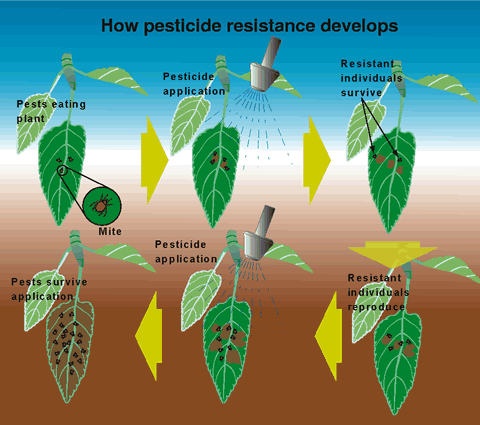The 7-Minute Rule for Eco Bed Bug Exterminators Dc
The 7-Minute Rule for Eco Bed Bug Exterminators Dc
Blog Article
Eco Bed Bug Exterminators Dc for Beginners
Table of ContentsFascination About Eco Bed Bug Exterminators DcThe Facts About Eco Bed Bug Exterminators Dc UncoveredWhat Does Eco Bed Bug Exterminators Dc Do?Get This Report about Eco Bed Bug Exterminators DcGetting The Eco Bed Bug Exterminators Dc To Work
Due to the fact that chemicals are harmful, they are likewise possibly dangerous to human beings, animals, various other microorganisms, and the environment. Consequently, individuals that use pesticides or consistently come in contact with them should understand the loved one toxicity, possible wellness impacts, and preventative actions to minimize direct exposure to the products they make use of. Risk, or risk, of making use of chemicals is the potential for injury, or the degree of threat included in using a chemical under an offered collection of conditions.
Applicators can lessen or virtually eliminate direct exposure-- and thus lower risk-- by following the tag instructions, making use of individual safety clothing and equipment (PPE), and managing the pesticide correctly. Even more than 95 percent of all chemical direct exposures come from dermal direct exposure, mainly to the hands and lower arms. By putting on a pair of unlined, chemical-resistant gloves, this kind of exposure can be nearly removed.
The unsafe impacts that take place from a single direct exposure by any type of route of entrance are termed "acute impacts." The 4 routes of exposure are facial (skin), breathing (lungs), dental (mouth), and the eyes. Acute toxicity is identified by taking a look at the facial poisoning, inhalation toxicity, and oral poisoning of test animals.
The Definitive Guide for Eco Bed Bug Exterminators Dc
Acute toxicity is gauged as the amount or concentration of a toxicant-- the a.i.-- required to eliminate half of the pets in an examination populace. This procedure is generally shared as the LD50 (deadly dosage 50) or the LC50 (dangerous focus 50). Furthermore, the LD50 and LC50 worths are based upon a solitary dosage and are videotaped in milligrams of chemical per kg of body weight (mg/kg) of the examination pet or partly per million (ppm).
The lower the LD50 or LC50 value of a pesticide item, the higher its poisoning to human beings and animals. Pesticides with a high LD50 are the least harmful to humans if utilized according to the directions on the item label. The persistent poisoning of a pesticide is identified by subjecting examination animals to lasting exposure to the energetic ingredient.
The persistent toxicity of a pesticide is more tough than intense poisoning to identify with lab evaluation. Products are categorized on the basis of their relative acute poisoning (their LD50 or LC50 values). Pesticides that are categorized as very harmful (Poisoning Group I) on the basis of either oral, facial, or inhalation toxicity should have the signal words threat and toxin printed in red with a head and crossbones sign plainly presented on the front panel of the plan label.
The severe (solitary dose) oral LD50 for pesticide items in this team varies from a trace amount to 50 mg/kg. Direct exposure of a few decreases of a material taken by mouth might be fatal to a 150-pound person. https://justpaste.it/dmzm0. Some chemical items have just the signal word threat, which tells you absolutely nothing regarding the intense toxicity, just that the product can create serious eye damages or severe skin irritability
The 9-Minute Rule for Eco Bed Bug Exterminators Dc
In this classification, the severe oral LD50 arrays from 50 to 500 mg/kg. A teaspoon to an ounce of this material might be deadly to a 150-pound individual (exterminator DC). Chemical products identified as either slightly toxic or relatively nontoxic (Toxicity Groups III and IV) are called for to have the signal word care on the chemical tag

All pesticide toxicity values, including the LD50, can be located on the item's Material Safety and security Data Sheet (MSDS) - bed bug heat treatment. Pesticide tags and MSDS can be acquired from retailers or manufactures. In addition, many products likewise have info that can be found online. The symptoms of chemical poisoning can range from a mild skin irritability to coma or also death.
Since of potential health concerns, pesticide customers and trainers need to identify the usual indications and signs and symptoms of chemical poisoning. The results, or signs, of pesticide poisoning can be extensively defined as either topical or systemic.
The smart Trick of Eco Bed Bug Exterminators Dc That Nobody is Discussing
Dermatitis, or swelling of the skin, is approved as one of the most frequently reported topical impact connected with pesticide direct exposure. Signs of dermatitis variety from reddening of the skin to rashes and/or blisters. Some people have a tendency to cough, hiss, or sneeze when exposed to pesticide sprays. Some people respond to the solid page odor and annoying impacts of petroleum extracts utilized as service providers in chemical products.
This symptom generally subsides within a couple of minutes after a person is gotten rid of from the direct exposure to the toxic irritant. A response to a chemical product that triggers a person not just to sneeze and cough but likewise to establish severe intense respiratory symptoms is much more likely to be a true hypersensitivity or allergic reaction.
Systemic impacts are fairly various from topical effects. They frequently happen far from the original point of call as an outcome of the chemical being soaked up into and distributed throughout the body. Systemic impacts typically include nausea, vomiting, fatigue, migraine, and digestive tract disorders. In sophisticated poisoning cases, the person may experience adjustments in heart rate, problem breathing, convulsions, and coma, which could cause fatality.
Report this page